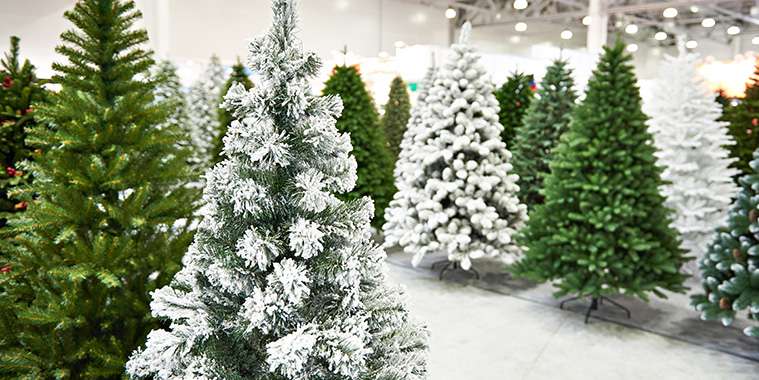By Dorothy Dobbie
It is Christmas tree season and many people are pondering the big question: fake or real?
On the one hand, some deplore the fact that each year 85 to 90 million evergreens are cut to feed the Christmas season demand in Europe and North America alone. What they are not considering is that each of those trees was grown expressly for this purpose on land that would grow very little else and that, while growing to the optimal size, each tree is absorbing about one ton of carbon dioxide while emitting enough oxygen for 18 people.
The case for fake trees is brief but clear. Fake trees are safe from fire. They can be used for many years (most last 8 to 9 years), they require no watering, shed no needles and produce no known allergens. They are cheap, costing $100 to $500 which can be amortized over several years. They are easy to set up and decorate, have tidy, uniform branches and . . . end up in the landfill, never to break down.
It is estimated that fake trees, made from PVC and metal, including lead, (they have also been made of aluminum, bottle brushes and even feathers) have a three-fold greater negative impact on the environment than a natural tree. As 85 to 90 per cent of these trees are imported from China, transportation impacts should be a concern for environmentalists.
I favour the real tree. As a well known tree-hugger, you can discount my bias for setting up a real tree, but can you discount the facts? Natural trees smell good. They are easily disposable and usually become mulch for someone’s garden or a base for a well trekked trail. While growing, in addition to absorbing all that carbon and releasing all that oxygen, real trees provide food and habitat for birds and other wildlife. Yes, they cost a bit more, about $50 to $100 a year, but the paybacks are worth it. And you are supporting local growers who depend on us for their trade and who contribute to our economy.
In the beginning . . .
How did all this start anyway?
In spite of what you may believe, the tradition of setting up evergreen trees in our living rooms goes back only a few centuries, although using trees as a symbol in various religions goes back millennia. In modern times, though, just as many of our other Christmas traditions originated in Germany and northern Europe, so did the Christmas tree, where in the 1500s people started bringing evergreens inside to celebrate the season. Even then, some set up real trees but others created “fake” trees, by building a wooden pyramid covered in evergreen boughs.
But the craze took over in the rest of the Western world when, in 1846, Queen Victoria and her German husband, Prince Albert, were depicted with their family standing around a decorated Christmas tree. She was the iconic celebrity of the day who set pretty well all the trends.
In the beginning, trees were decorated with apples, nuts and berries and various other found materials. Then candles were added. In 1610, an ingenious German inventor created tinsel to mimic spider webs which mythology said turned into silver when spun on a Christmas tree.
Today, tree decorating is a matter of great artistic choice and tradition, as is the type of tree you choose. Some like Scots pine, others go for the hardier Nobel fir and so on. As the season progresses, you can find vendors of your real tree in every neighbourhood. But at least once in your family history, you should try going to cut your own at one of the tree growing farms in the local area. While there are almost 2,400 tree farms in Canada, there is a handful in the Winnipeg vicinity. Find them by going to the Manitoba Tree Growers Association website at realchristmastrees.mb.ca/listoffarms
Going out to cut your own tree can create a wonderful Christmas family memory. Today, most establishments offer gift shops and entertainment such as fire pits and sleigh rides. The trees average $24 to $40.
In spite of all these real tree benefits, though, fake trees still win on the economic front. Canadians spend about $55.2 million on real trees, but $56.2 million on fake ones.
Dorothy Dobbie is a tree-hugger from a long way back. She is the publisher of Manitoba Gardener Magazine.



